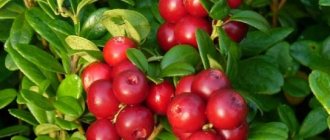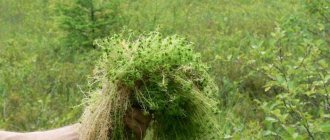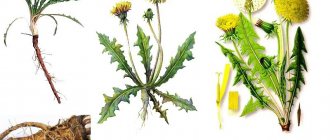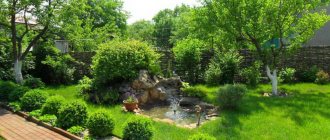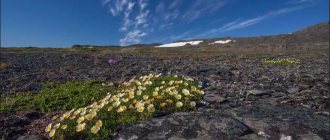Cultivated and wild plants. Titles
2nd grade of general education school is the period when children begin to acquire systematic knowledge about objects of living and inanimate nature. Earlier study of the subject is propaedeutic in nature. But already in the second grade, for example, such concepts as cultivated and wild plants are introduced.
The name of the groups becomes clear to children after completing exercises where they are asked to compare pairs of plants. For example, spruce and apple trees, birch and plums, gooseberries and junipers, tomatoes and coltsfoot, peas and chicory. The teacher invites children to pay attention to where the species being compared grow, what conditions are necessary for them, and who cares for them.
After the work done, children easily come to the conclusion that all plants are divided into two large groups. Those that are cared for by humans are called cultural. Wild plants got their name due to the fact that they grow everywhere. Their development, maturation, and fruiting do not require human intervention.
Rhodiola quadripalum
In common parlance - a red brush. Endemic plant of the Altai region. One of the most popular among these mountain herbs. It is used in both folk and traditional medicine for the treatment of female diseases of the pelvic organs, infertility, male prostatitis, and inflammation. Helps stop bleeding, normalizes the functioning of the cardiovascular system, and helps in the treatment of various types of viral and bacterial diseases.
Externally very interesting, unusual herbs. The description is as follows: low plants growing on rocky surfaces, with narrow, closely spaced leaves. The flowers are inconspicuous and pale, but the leaflet-shaped fruits are very bright and red. The shape of the leaves resembles a brush, which is why this plant got its name.
The main differences between wild plants and cultivated plants
For the growth and development of plants, certain conditions are necessary. For cultivated species, such conditions are created by humans. He looks for a favorable place for planting plants, feeds them, removes weeds, harvests crops, and protects them from pests and diseases.
Wild plants, the names of which can be found in numerous reference books, do not require special conditions. They themselves adapt to life in the wild.
First aid for poisoning by poisonous plants
Signs of poisoning by poisonous plants are rapid heartbeat, nausea, pain in the liver, and an excited or lethargic state. First aid involves:
- cleanse the digestive tract by giving the victim a drink of salted water and inducing vomiting (do this 5-7 times);
- drink activated carbon at the rate of 1 tablet per 10 kg of body weight;
- in case of fainting, lower the victim’s head down, raise his legs, check if the tongue sinks in;
- if breathing stops, perform chest compressions and artificial respiration. See a doctor immediately.
Knowing poisonous plants will increase your chances of survival in an unforeseen situation and will help prevent poisoning in other people, especially if you went on a trip or a walk in the forest, on a picnic, or found yourself in nature for some other reason.
Category: Plants
On this page there is material on the following topics:
message about wild plants
report on wild plants grade 2
why are forest and meadow plants called wild, and garden and orchard plants
wild plants interesting facts
message about wild plants grade 2
Questions for this article:
What wild plants have you ever eaten?
What wild plants have you or your relatives or friends prepared any dishes from?
What can be prepared from wild plants?
What wild poisonous plants do you know that grow in your area?
The poisons of many plants in small doses have medicinal properties. For this reason, poisonous plants - lily of the valley, belladonna, etc. are used to prepare medicines. Do you think poisoning is possible when using such medications?
Basis for classification
Wild plants, the names and photos of which are so familiar to us, appeared on Earth much earlier than cultivated species. In other words, initially the planet was inhabited only by wild plants. It was they who provided ancient man with food, shelter, clothing, and tools.
While collecting, people gained experience, thanks to which they appreciated the positive properties of the roots, leaves, stems, and fruits of some plants. Gradually, man learned to grow the most useful species for himself near his own home and use the results of his labor for a longer period of time than was the case during gathering. This is how cultivated varieties of plants began to appear, as a result of their care their taste and other qualities improved.
Wild plants, the names of which are generally known, are divided into groups. Scientists distinguish among them herbs, trees, and shrubs. For example, you can easily determine which group nettle, chamomile, birch, hazel, rye, and cornflower belong to. It must be said that cultivated plants are also divided into similar groups.
Wild onion
Wild Onions
Many edible plants are eaten very rarely, but wild onions are not. It is very common in cooking, and some people use it along with regular green onions. If you come across it on the way, then you can eat it with peace of mind.
The perennial grass often grows in pastures, fields and forests. It can be distinguished by its long bare stem, arrow-shaped leaves and a spherical basket of white and lilac flowers.
All green parts of the plant can be eaten fresh or dried. To use it raw, no additional processing is required; just rinse it thoroughly. Onions are dried in the open air or in an oven, then chopped and used as a seasoning.
Horse sorrel
Wild sorrel is a familiar edible plant to many. It is very similar to its small brother, the common sorrel. The difference lies in the size and structure of the leaves, which in the horse species are much larger and tougher. The total height of the plant can reach two meters in height.
Due to the fact that the leaves are quite dense, they do not taste as pleasant as those of the usual type, but are quite edible. All parts of the plant are rich in tannins, essential oils, vitamins and microelements. And if the root is better used for preparing decoctions, then the leaves and petioles can be eaten fresh, for example, as part of a vegetable salad.
It is often found in forest and forest-steppe zones, in meadows, and horse sorrel also loves damp, swampy areas.
Natural areas and plant distribution
The species diversity represented by wild plants, their names and their significance in economic activity are directly related to the region of the Earth where they grow.
An abundance of edible and medicinal wild plant species is observed in tropical and subtropical humid climates. In the tundra and forest-tundra zones, the species diversity of plants is more sparse, but large reserves of, for example, mosses and lichens used in various sectors of the national economy can be concentrated here. Herbaceous and shrubby plants that produce a good harvest of berries are also not uncommon in the harsh northern regions.
Plants from the Red Book
The number of some wild plants is greatly reduced due to both climate change and human economic activities. They are included in the Red Book , they need to be protected so that the plants do not completely disappear from the face of the Earth.
- Forest anemone.
- Wolf's bast.
- Spring adonis.
- European swimsuit.
- May lily of the valley.
- Lyubka bifolia.
- Lungwort.
- Common juniper.
- Primrose officinalis.
- Liverwort (copse).
- Snowdrop is snow-white.
- Lumbago (sleep-grass).
- Corydalis.
- Skewer.
- Orchis.
Snowdrop white.
Blooms in April. Its flower is very beautiful. It consists of six white petals. It is also called a milk flower, since the snowdrop bud resembles a drop of milk. Because of its beauty, people pick this plant in huge quantities. Therefore, it is no longer found around large cities. Collecting snowdrops , like other plants from the Red Book, is strictly prohibited.
Lungwort.
A small perennial plant with a branched root. The flowers are collected in umbrella inflorescences. When they first open, they are bright purple in color, and later darken. Because the flowers bloom gradually, the lungwort is multi-colored. Used in medicine since ancient times. Blooms in April - May for only one month. The plant is named lungwort because bees collect tribute from it in early spring.
Wolf's bast.
A small upright shrub. It has few branches with grayish-yellow bark. The stem and branches are covered with brown dots. The leaves are long, oval, curling at the tips of the branches. The peculiarity of the wolf's bast is that first it has lilac-pink flowers, and then leaves. The flowers exude a delicate aroma reminiscent of vanilla. The poisonous fruit ripens in August; it is red in color and the leaves are green.
Ludka bifolia.
A small herbaceous plant with loose tassels of fragrant white flowers of the same size. Lyubka bifolia blooms at the end of May and throughout June. It is also called a forest orchid - for its beauty, or a night violet, since in the evening it begins to smell very strongly.
Wild plants: value for humans
Wild plants, examples of which are named in school textbooks and additional reference books, contain many substances useful to the human body. Today, the study of this group continues for the content of proteins, carbohydrates, fats, vitamins, minerals, and vegetable oils.
Man has long been looking for ways to consume wild plants for food. Since ancient times, picking strawberries, blueberries, blueberries, cranberries and many others has been common. Fruits, leaves, stems are consumed both fresh and processed.
Milk thistle
Another name for this Altai herb is milk thistle. Since ancient times, this plant has been revered as a very good medicinal assistant. Infusions from different parts of the herb help against liver diseases, cleanse the intestines and eliminate inflammatory processes, relieve swelling and treat jaundice and many other ailments.
The plant itself sometimes reaches 1.5 m in height. The leaves are very beautiful, with a white border and a dissected edge. The flowers look like round cones, dark pink or purple. A very valuable property of milk thistle, which allows it to be used in both folk and traditional medicine, is the complete absence of side effects.
Its beautiful appearance allows it to be used not only as a medicinal plant, but also as an ornamental plant in many gardens and orchards.
Medicinal properties
Among medicinal raw materials, wild plants occupy a special place. The names and meanings of medicinal preparations made from herbs, parts of trees and shrubs growing in the wild have recently been actively created and studied, and their list has expanded significantly. Traditional healers have extensive experience in using wild plants as medicines.
However, the number of flora representatives fully studied and used by humans in medicinal preparations is only 4% of the total number of species that are wild plants. The names of new species are regularly added to this list.
It should be noted that more than half of the raw materials intended for pharmaceutical production are supplied through the collection of medicinal plants in nature. Only a small part of them is cultivated.
Pests
In nature, in addition to animals, plants have other natural enemies - these are the so-called pests, which include:
- Ticks. There are several thousand species of them in nature. Most are microscopic in size. Among them there are very dangerous ones. When they fall on leaves or stems, they suck out the juice from them, causing the shoots to begin to lose their shape. Some ticks are carriers of viruses.
- Moth moth. These insects belong to the butterfly family. Pieds are small in size; medium-sized individuals are rarely found, which have a wingspan of 5 to 20 mm. The caterpillars eat the foliage, after which the plant most often dies.
- Adult aphid. There are thousands of species of aphids. This is a very small insect, black or green in color, ranging in size from 1 to 5 mm. In midsummer, many aphids grow wings, which help them travel long distances to find new food. Aphids live on the underside of leaves, on buds and on the tops of plant shoots. It eats foliage, stems and flowers.
All types of pests must be dealt with using special means, otherwise they can destroy trees, grasses and shrubs. What are paronyms in Russian, you will find the answer in the link.
Rules for collecting raw materials
When collecting medicinal and edible wild plants, it is imperative to follow the rules, thanks to which you can exclude cases of poisoning or other negative effects on the body. Only well-known plant species are allowed to be collected. Those that are questionable in appearance and rules of use are not subject to collection. The above-ground parts of plants are usually collected before flowering. At this time, the shoots and leaves are more tender and do not contain dangerous compounds. It is recommended to collect plants in clear weather in the afternoon, when moisture from dew is excluded.
It is prohibited to collect plants along roads, near landfills, sewers or industrial sites. Combustion products and dust containing substances hazardous to human health collect on their parts.
The collected raw materials should not be stacked too tightly. This can lead to damage to the plants. It usually manifests itself in the darkening of their parts. It is better to collect prickly and stinging plants, such as nettle and thistle, while wearing gloves. And the tough stems of others are more convenient to cut with a knife.
Parts of plants that have visible damage, such as growths, rust, rot, are not recommended to be collected. They may contain substances harmful to human health.
Herbs: general characteristics
Most often, herbs include plants that have slightly modified shoots. That is, in the classical sense, a shoot should include a stem, leaves and a flower. So, not all structural parts may be observed in herbs. Often the stem is modified, the leaves acquire a shape and size that helps them adapt to environmental conditions as much as possible.
Of course, all herbs have a flower as a reproductive organ. However, they are also very different in size, shape and color. This factor will depend on the pollination method of the particular plant species.
Wild herbs are a very large group, including representatives from almost all known families of angiosperms. The names of herbs are very diverse. There are both historically established “names” and scientific data based on binary nomenclature (in Latin, the first name is genus, the second is species). For example, Leonurus heterophyllus, or motherwort.
The root system, shoot branching, flower and leaf structure - all these botanical characteristics will depend on the specific genus and species of plant, so it is impossible to identify any common morphological characteristics for all wild herbs.
